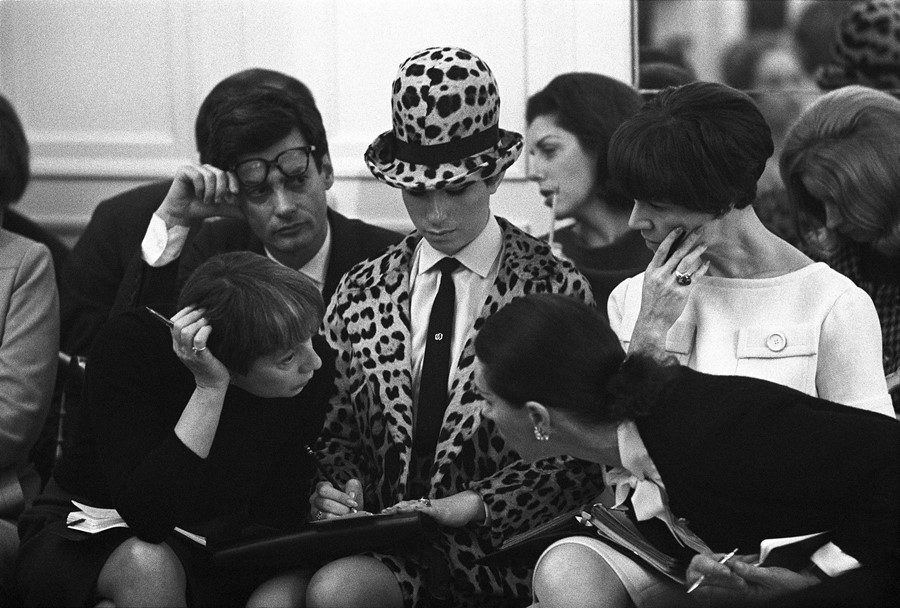Bill Eppbridge’s photographs for LIFE magazine capture the magical trip, orchestrated by Vogue’s Diana Vreeland
There’s never any doubt that Barbra Streisand is a star. So she sang, when she left behind Brooklyn for a $5,000-a-week stint on Broadway in Funny Girl, a musical portrayal of the legendary Fanny Brice: “Cause I’m the greatest staaaaar / I am by faaaaaar / but no-one knooooows it!”
A new Rizzoli tome, Becoming Barbra, offers an unprecedented look at the beginning of Streisand’s career – one that saw her travel to Europe for the first time and become an haute couture client and Vogue cover girl. Between 1963 and 1966, a period of immense cultural change, photojournalist Bill Eppridge captured the meteoric rising of her star at a pivotal point for LIFE magazine. The rest is history.
Eppridge himself was a photographer who was often at the centre of popular culture – his most famous pictures are those of the assassination of Robert F. Kennedy, and he would capture war zones, Woodstock and the Ku Klux Klan over the course of his career. The book follows the young Barbra from her beginnings in New York, where she shops at thrifts stores, smokes cigarettes, does her own hair and lives in a cluttered Lennox Hill apartment above a seafood restaurant; one of Eppridge’s photos shows her singing while she’s doing her laundry in the bathtub, which was located in her kitchen.
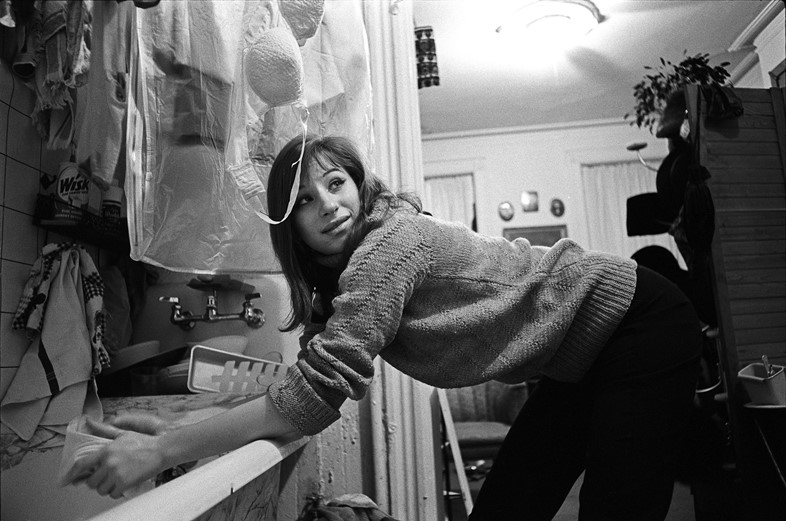
Fast forward to 1966 and Streisand was “a star in full orbit,” as Eppridge writes. Babs had shed a few pounds, had her hair cropped into a geometric Sassoon-esque bob and wore strings of pearls with chubby fur coats. By this point, she was recording her bestselling album Je m’appelle Barbra with Columbia Records, as well as her primetime Color Me Barbra television show, for which she had a $5 million contract.
At just 23, Streisand had risen to become the undisputed queen of musical comedy, television and records. Every one of the seven records she had made sold over a million copies; she earned $50,000 per concert appearance; for nearly two years she pulled in standing-room-only audiences for a $5,000-a-week stint on Broadway in an otherwise undistinguished musical, Funny Girl, which she would go on to turn into a Hollywood film and take home a cool $1 million for, as well as an Oscar for Best Actress.
Streisand and the rest of the 1960s Jet Set were chronicled in The Beautiful People, Marilyn Bender’s infamous exposé of 1960s celebrity culture in all its profligate, trivial and gripping glory. In her one-woman television spectacular in March 1965, Streisand incorporated a nine-minute segment of fantasy at Bergdorf Goodman. “She sang and flitted about the shop in the most opulent, throwaway chic by Emeric Partos, the custom fur-designer, and Halston, the milliner,” wrote Bender. “The singer gave assurance that she really belonged in Bergdorf’s.”
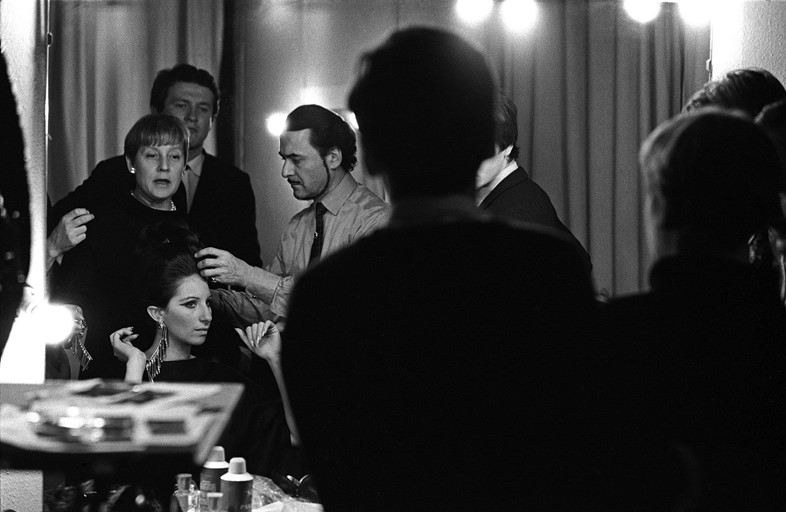
For her next Color Me Barbra show, she landed fabric manufacturer Chemstrand as a sponsor, which picked up the tab for her to attend – and place several orders – at the Paris haute couture shows. Diana Vreeland, always enthused by an aquiline-nosed beauty, waved her fairy godmother wand and orchestrated the trip – Barbra’s first time in Europe, let alone Paris – and dispatched Richard Avedon to photograph the starlet as an exotic couture-clad swan. Eppridge also accompanied Streisand and Vogue on the trip to Paris, still on assignment for LIFE.
However, at four of the six shows she attended, Barbra was late; “partly because she was ill and partly because she is Barbra,” reported Diana Lurie in LIFE. “Dior delayed it ten minutes while the Duchess of Windsor, among others, waited. “I didn’t expect them to delay for me,” said Barbra later. “No wonder the duchess looked so grouchy.”
In Eppridge’s photos, Streisand can be seen sat knees-together on the row of Roger Vivier-heeled women including Marlene Dietrich at Chanel. In one photo, Vogue fashion editor Babs Simpson appears to be assisting her make notes on her order, while Avedon studies her face from behind. Elsewhere, she can be seen charming Mme. Chanel herself in the leopard-skin suit of her own design with matching bowler hat, as well as dining at Maxim’s in a silk turban and dress with Dior’s Marc Bohan. “I had leopard-skin pillows on my bed, and I decided to have a leopard suit made – this was before PETA,” Streisand told InStyle in 2009. “Going to the fashion houses was exciting. Unfortunately, I was sick to my stomach for ten days from a bouillabaisse I ate in Marseille. If I look a little strange, it’s because I thought I might throw up. I don’t think I was even aware that Marlene Dietrich was at the end of the row.”
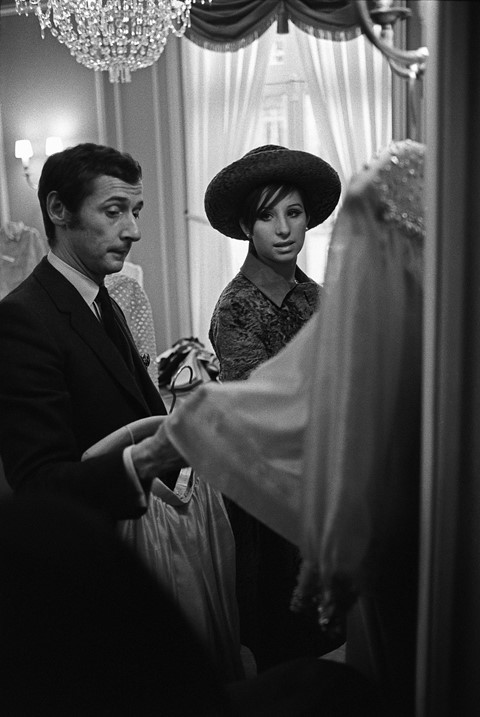
According to LIFE, Barbra didn’t like the Paris prices. “They sew buttons better here but they also charge more,” she snipped. Many of the styles, arguably more conservative compared to ready-to-wear, didn’t rile her either. At Grès, watching a large tent dress sway past, she whispered: “You’d never be able to tell what was going on under there.” At Dior, though, she broke down and bought day dresses, suits, evening gowns, sports clothes, hats, shoes and coats, costing a snappy $20,000, “as though she were putting together an order of sandwiches, to go, from the Stage Delicatessen”.
For the Vogue sitting, Barbra turned up to the studio in a black mink coat, purple dress and long alligator boots. She was poorly and ill-tempered, complaining throughout that she might be sick all over Yves Saint Laurent’s end-of-show bridal dress. “She is capricious as a child, but the caprice is forgivable since under all the attributes of success, adulation, and admiration, underneath the poise, sophistication, and merriment there yawns the lack of self-confidence and the nervousness of youth,” wrote Vogue’s Polly Devlin.
Alexandre de Paris (née Louis Alexander Raimon), who did the Duchess of Windsor’s hair as well as Princess Grace’s, gave the young Streisand flowing locks of thick, dark hair and even let her keep one of the hairpieces in exchange for her new record. In one photo, she posed with an elderly Madame Grès. “Comme elle est belle,” said Grès of Streisand, and wrapped her up tenderly in a delicious little coif: a clean white wimple of Moreau linen with a slit for the head and 12-inch side pieces to tie this way and that.

Luckily, Avedon gave Eppridge permission to photograph the shoot as long as his cameras weren’t a distraction, which Eppridge had anticipated and so came prepared with a virtually silent Russian Kiev camera. When Avedon asked to hear the shutter and it didn’t make a sound, Eppridge was granted access. Once Avedon was occupied and Streisand’s voice was booming over the studio, he went back to using his Nikon.
When Diana Vreeland caught wind of the pictures, she responded with typical Vreelandian hyperbolic enthusiasm. Streisand, she decided, would appear on the March cover with sloe eyes lined with Nefertiti eye liner and a cheeky smile sprouting a spring daffodil – the perfect youthful spirit to imbue the couture collections with as the threat of swinging ready-to-wear loomed over Paris. She appeared on the cover of Vogue the same month she appeared on the cover of LIFE, photographed by Eppridge.
After returning to New York, as Marilyn Bender duly noted, “Miss Streisand never went back to feather boas”. After a trip like hers, who would?
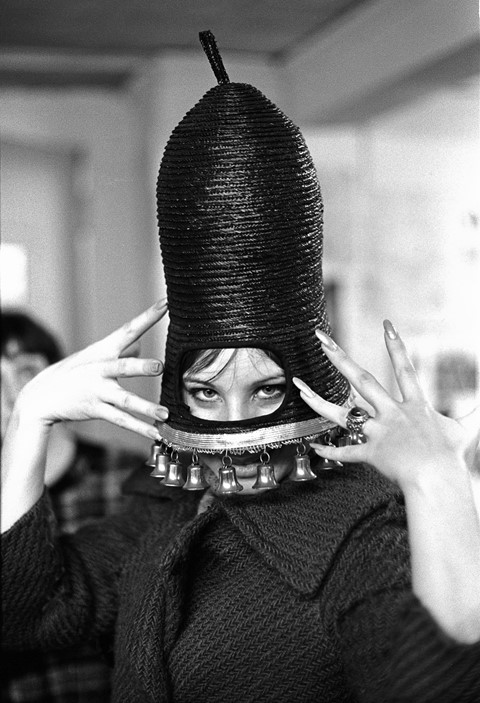
Becoming Barbra by Bill Eppridge is published by Rizzoli and on sale now.
